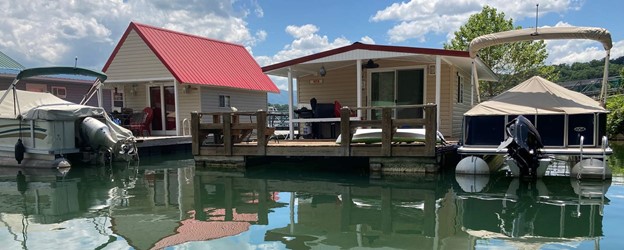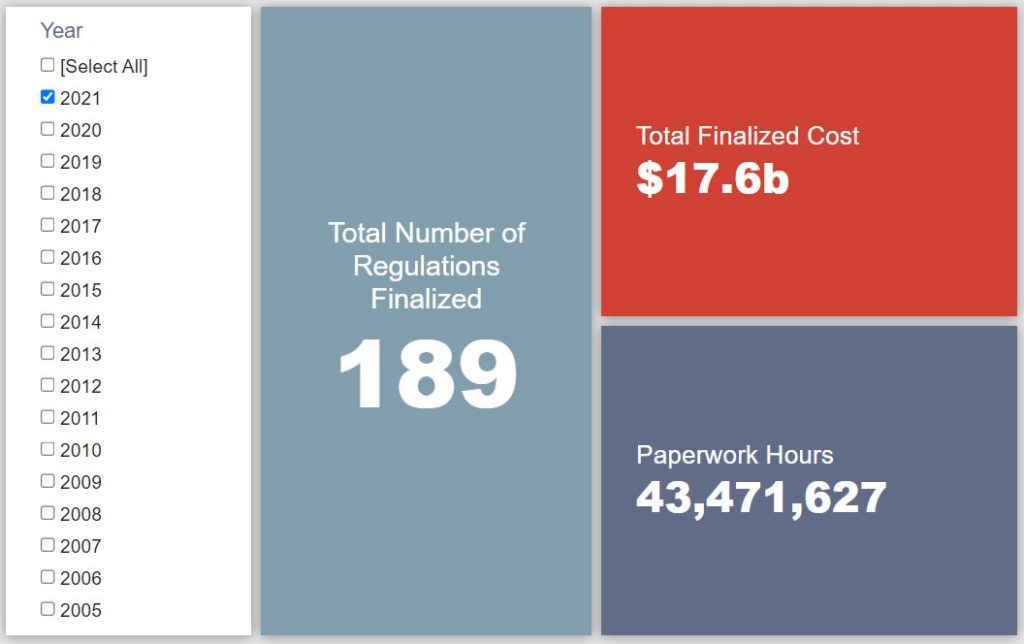Week in Regulation
September 13, 2021
Mine Safety and Floating Cabins
Last week was one of those weeks that highlights the variety of industries and activities encompassed in the pages of the Federal Register. In this case, the most noteworthy actions were: A) a proposed rule out of the Mine Safety and Health Administration (MSHA); and B) a rule from the Tennessee Valley Authority (TVA) regarding floating cabins. Across all rulemakings, agencies published $180.6 million in total net costs and added 104,958 paperwork burden hours.
REGULATORY TOPLINES
- Proposed Rules: 29
- Final Rules: 59
- 2021 Total Pages: 50,750
- 2021 Final Rule Costs: $17.6 billion
- 2021 Proposed Rule Costs: $177 billion
NOTABLE REGULATORY ACTIONS
The most economically impactful rulemaking published last week was the MSHA proposal regarding “Safety Program for Surface Mobile Equipment.” In particular, the agency seeks to “require that mine operators employing six or more miners develop and implement a written safety program for mobile and powered haulage equipment (excluding belt conveyors) at surface mines and surface areas of underground mines.” MSHA estimates that the compliance costs of such requirements would be $127.9 million over 10 years or $17 million on an annualized basis.
TRACKING THE ADMINISTRATIONS
As we have already seen from executive orders and memos, the Biden Administration will surely provide plenty of contrasts with the Trump Administration on the regulatory front. And while there is a general expectation that the new administration will seek to broadly restore Obama-esque regulatory actions, there will also be areas where it charts its own course. Since the AAF RegRodeo data extend back to 2005, it is possible to provide weekly updates on how the top-level trends of President Biden’s regulatory record track with those of his two most recent predecessors. The following table provides the cumulative totals of final rules containing some quantified economic impact from each administration through this point in their respective terms.
![]()
As noted above, the main action of the week in terms of economic impact was a proposed rule. Therefore, there was – once again – minimal movement on the Biden Administration’s final rule tally. It turns out that same trend extends to the other two administrations as well. Across the board there were only nominal shifts in each administration’s total. The most notable spike across any of them was a $21.6 million increase in the Trump-era cost total due to a routine airworthiness directive rule.
THIS WEEK’S REGULATORY PICTURE
This week, new requirements for floating cabins on the Tennessee River System (TRS).

Source: Tennessee Valley Authority
On September 10, the TVA published a final rule in the Federal Register that tightens requirements on floating cabins, like those pictured above, in the TRS.
The TVA designated floating cabins as obstructions under the Tennessee Valley Authority Act in 1971. Under that rule, the TVA barred new floating cabins on the river. Despite the rule, however, floating cabins have continued to proliferate, and the TVA now estimates there are about 2,250 such structures in the system. In addition to posing safety concerns, the structures contribute pollution in the form of debris and wastewater.
A 2016 policy adopted by the TVA requires the removal of all floating cabins by 2046. In the interim, TVA was to adopt regulations to ensure safety. The new final rule is the second of two rules issue by the TVA implementing that mandate.
While the first rule defined floating cabin and required owners to register their structures with the TVA, this rule requires all cabins to be permitted, subject to certain safety and environmental standards. Failure to meet the standards can result in removal.
Owners will have until October 2024 to get their cabins up to code and apply for a permit. The requirements include ensuring proper floatation systems, visibility of mooring lines, and wastewater systems that comply with local regulations.
TOTAL BURDENS
Since January 1, the federal government has published $194.6 billion in total net costs (with $17.6 billion in new costs from finalized rules) and 45 million hours of net annual paperwork burden increases (with 43.5 million hours in increases from final rules).












